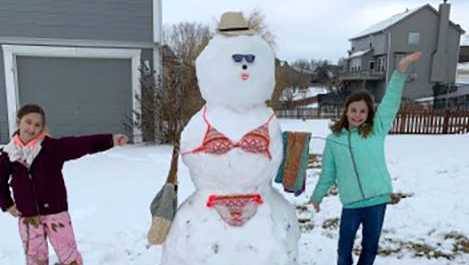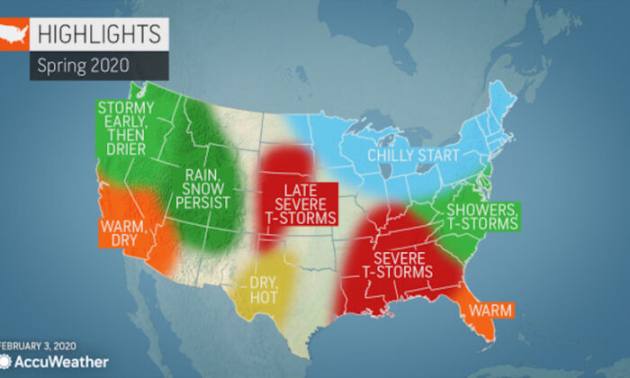Sick of winter? You’re not alone. But hold on as it may be longer than anyone wants. Large swaths of North America will see a prolonged winter season.
In an AccuWeather report on Feb. 6, forecasters said they are predicting seasonable winter weather in most places across the United States which could drag on “possibly even beyond the official beginning of spring.”
READ: Researchers say Climate Change data manipulated
The chance for snow in the plains Northeast, Great Lakes and Ohio Valley is likely to linger into mid-spring, while the Southeast can expect a couple of months of wet and stormy weather.
The longer winter also means flu season will last longer but its the wet, cold that most are tired of.
Plains
Planting delays could hit the Upper Midwest and northern Plains, particularly in the Red River Valley, Pastelok warned, due to a combination of wet weather and snowmelt.
However, areas in the southwestern Plains, including areas from Dallas and Oklahoma City on westward, can expect to experience dryer spells, with summer-like temperatures in cities from El Paso to Dallas.
“I think those areas will end up missing out on a lot of big systems, unlike last year. These systems, we think, will tend to head farther north this year,” he said.
Northeast, Great Lakes, Ohio Valley
“It looks to me like cold and snow combined could linger this year before we see a break by mid-spring,” said AccuWeather Expert Long-Range Meteorologist Paul Pastelok.
Most regions in the Northeast, Great Lakes, and Ohio Valley won’t see a climb in temperatures until April, Pastelok said, with snow cover persisting particularly in Vermont, New Hampshire, and Maine.
Meanwhile, rain mixed with snow will be experienced across the the I-95 corridor from Washington, D.C., to Boston, stretching the regions’ winter-like weather into late March.
Pastelok warned of “severe weather events” frequenting areas in the Northeast and mid-Atlantic, including Pittsburgh, Cleveland and Philadelphia, while the eastern Ohio Valley, Tennessee Valley and Southeast could see planting delays due to regional rainfall.
Southeast, Tennessee Valley, Gulf States
This spring, the Southeast should expect a wet weather pattern, stormy conditions, potential flooding, with most rainfall taking place in the first half of the season.
“We’ve already seen a pretty active southern jet stream with a lot of storms. I think that continues into the spring season and that’s going to lead to some flooding,” the forecaster said.
Calmer weather is predicted for May, however, before then, the Gulf states and the Tennessee Valley could be frequented by severe storms, which could cause a “couple of big events” for cities such as Atlanta, Birmingham, Alabama, and even Jackson, Mississippi, Pastelok said.
West
Above-average temperatures will be felt largely across the West this spring, Pastelok said, adding however that dry conditions and rising temperatures in Southern California could be of concern.
“There are some drought concerns this spring, especially for Southern California,” Pastelok said. “If we don’t start to see any precipitation here on the back end of the winter season, Southern California will get drier much quicker than expected.”
–Wire services









